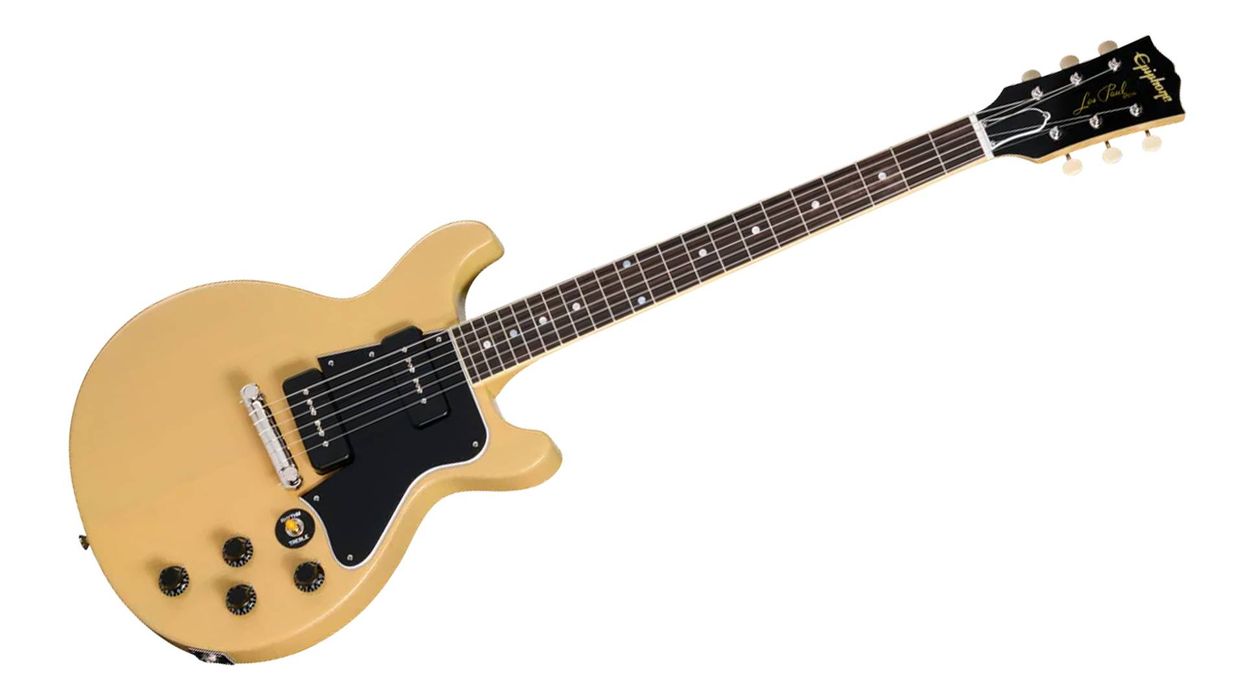Legend has it that in the 1940s, country super-picker Merle Travis was getting into a cab with Tex Ritter after a gig, when he expressed surprise at a question from a fan.
“I can’t believe that kid asked me what kind of strings I use,” Travis said.
“Well, what’d you tell him?” asked Ritter, to which Travis replied: “Why, guitar strings of course!”
Travis might have been kidding around, but there were so few options for an electric guitar player at the time that we can be fairly certain his fan only wanted to know the brand of strings, and maybe their gauge. If you ask a guitarist that question today, it’s a completely different story. D’Addario’s catalog alone lists about 25 different types—not gauges—of guitar strings (seven for electrics), and that’s not including strings for basses, steels, or specialty guitars like baritones. Just imagine the number if the many other string manufacturers were included, too.
Most of these string types were developed during and after World War II, especially as manufacturing technology had energy to burn when the demand for wartime inventions and material slacked off. The rapid pace of innovation for all things related to guitars hasn’t slowed since, and, as a result, a lot of simple terms like “guitar” and “amplifier,” as well as “guitar strings,” just don’t mean much anymore. And that brings us to retronyms—the more precise terms needed to distinguish something within a newly complex category.
If the fan had asked about Merle’s amplifier, he wouldn’t have called it a “tube amp.” Why? Because solid-state amps hadn’t been invented yet. And a more modern Merle might have answered the strings question with “roundwounds”—a distinction you wouldn’t have needed to make before flatwound strings became popular in the 1950s. At the time Merle started playing guitar back in Muhlenberg County, Kentucky, you wouldn’t have needed to say he played “acoustic guitar,” because electric guitars were still just being invented. By the 1960s, however, if you said you played guitar, it was almost an invitation to be asked a second question: acoustic or electric?
The world of guitars and how to describe them went through a dramatic shift in the first quarter of the 20th Century. We tend to think the Hawaiian music fad that began in the ’teens was mostly about ukuleles, but Hawaiian music’s biggest influence was the introduction of the Hawaiian style of playing guitar (on the lap with a slide, like a Dobro)—not just a different type of guitar. Starting in 1915, Hawaiian guitar was a driving force in the world of guitars for the next 40 years and gave us Nationals, Dobros, and solidbody lap steels, plus all the accessories and music that went with them. The word “Hawaiian” isn’t used much anymore, but the pedal-steel guitar heard in country music can be traced back to simple little electric planks with a pickup. And now the retronym “lap steel” is used to distinguish them from later versions that came with legs.
The conventional guitar, and how it was played, got saddled with a long list of retronyms to set the original styles apart from Hawaiian guitars that were played horizontally with a slide and very high string action. Today, most people think of “Spanish guitar” as referring to a classical guitar. But starting in the 1920s, “Spanish” was actually used to describe the original way of playing guitar, while “Hawaiian” referred to a guitar played horizontally with a slide.
These distinctions crept into guitar manufacturers’ model codes and are still with us. The most obvious example would be Gibson’s ES models. The Charlie Christian ES-150 could have simply been an E-150, but the ES for “electric Spanish” was needed to distinguish this new electric model from a Hawaiian version already in production. ES is thus one of the most widely used retronym codes today—at least in the world of guitars. Gibson’s solidbody EH models aren’t much more than cute little dinosaurs now, but in the mid-1930s, they were harbingers of Gibson’s Les Paul models that followed over a decade later. Today the list of retronyms used to define an electric guitar more accurately, such as “semi-hollowbody,” save us a lot of time.
If you march backwards in time far enough, all those retronyms like classical guitar, Spanish guitar, and acoustic guitar fall away. If a proto-Merle Travis had ambled into a music store during Civil War days—before Orville Gibson started messing around with carved-top guitars strung with steel strings—the conversation over the counter would have been simple and obvious. When proto-Merle asked for guitar strings, there would have been one choice: gut strings. Proto-Merle’s guitar would have been a lightweight, all-wood flattop, with only 12 frets clear of the body and no cutaway, and you’d be hard-pressed to hear it across a large room if he was competing with polite conversation. Some historical purists might get excited to imagine those simpler, quieter days when so few retronyms were needed to communicate about guitars, but I’m not one of them.
















